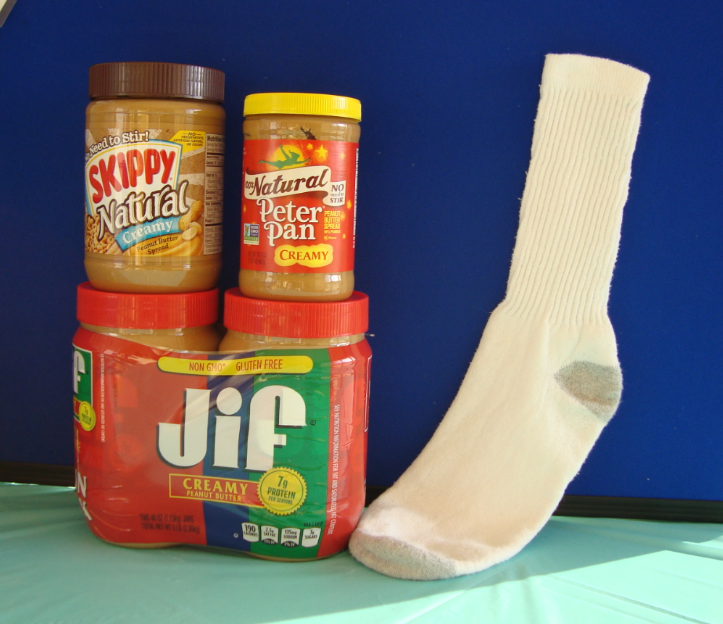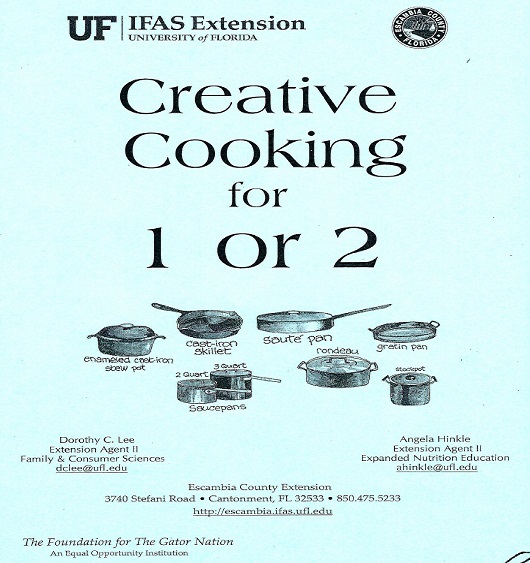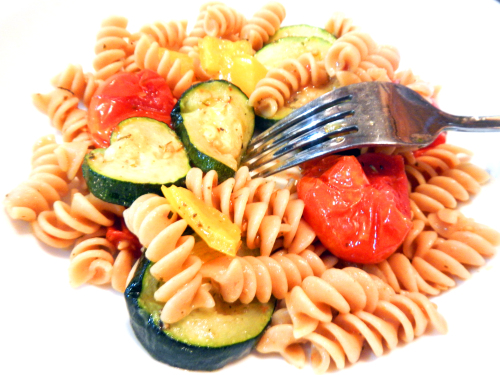
by Angela Hinkle | Oct 19, 2016
 It’s that time of year: going to Friday night football games, decorating with pumpkins, welcoming in some cooler weather, and harvesting our locally grown peanuts and cotton. This also means it’s time for the Peanut Butter Challenge. We collect jars of unopened peanut butter throughout the Northwest Panhandle of Florida through November 23rd. (Contact your local UF/IFAS Extension office for details and peanut butter drop-off sites.)
It’s that time of year: going to Friday night football games, decorating with pumpkins, welcoming in some cooler weather, and harvesting our locally grown peanuts and cotton. This also means it’s time for the Peanut Butter Challenge. We collect jars of unopened peanut butter throughout the Northwest Panhandle of Florida through November 23rd. (Contact your local UF/IFAS Extension office for details and peanut butter drop-off sites.)
Peanut butter is a locally grown (okay, we don’t actually grow peanut butter, but we do grow the peanuts that make peanut butter), protein packed, tasty food that is safe to eat and store at room temperature. For these reasons, it is one of the most requested items at food pantries. After Thanksgiving, we will distribute to food pantries and organizations that give food to hungry families in need.
Okay, so what role do socks play in this? Cotton, another great locally grown agricultural product, is used to make socks. And even though UF/IFAS Extension does not have a “Sock Challenge,” the homeless and limited-resource families are often in desperate need of new white socks. There are plenty of shelters and schools who would really appreciate donations of clean new socks – any time of year.
So…Peanut Butter and Socks – they really are the Florida Panhandle’s perfect combination!

by Dorothy C. Lee | Oct 15, 2016
 A large and ever-growing number live the single life these days. You have a lot of company and something in common: freedom of choice. Cooking for one or two can be creative and nutritious. Whether you’re a novice cook or your family has grown and moved out, and, once again, you’re solo cooking…it still can be rewarding! Rewards? They can be summed up in one word: freedom—freedom to plan the meals you want and freedom to enjoy them when and where you want.
A large and ever-growing number live the single life these days. You have a lot of company and something in common: freedom of choice. Cooking for one or two can be creative and nutritious. Whether you’re a novice cook or your family has grown and moved out, and, once again, you’re solo cooking…it still can be rewarding! Rewards? They can be summed up in one word: freedom—freedom to plan the meals you want and freedom to enjoy them when and where you want.
Getting Ready to Cook for ONE or TWO
“Planning…shopping…storing…there’s so much to do even before I cook. Is it worth it for one or two?” Effort? Yes. But worth it? Definitely—who is more important to you? Call it “challenged” coupled with “just rewards.” Mostly, the challenge involves organization, planning, and nutrition. Here, then, is a Master Plan for meeting the challenges of “Solo-Cooking:”
Plan menu—preferably for a week’s worth of meals you’ll be preparing:
- Write out your menu
- A grocery list is a must
Survey your kitchen for basic cooking utensils:
- Non-stick skillet for stir-frying or pan broiling with little fat
- Vegetable steamer so you don’t boil away all the vitamins
- Two heavy-gauge stainless steel sauce pans: a small one for soups and sauces and a medium one for cooking pasta or steaming vegetables
- A paring knife for chopping and dicing and a large knife for cutting meats
- A wooden spoon that won’t damage non-stick pans
- Measuring cups and spoons
- Microwave cookware if you have a microwave oven (a microwave is a big plus for solo-cooking…it saves time and energy (your own and the local utility’s)
- Colander and wire whisk
Your cabinets don’t have to be bulging with exotic ingredients; just make sure you have basics on hand:
- Olive and vegetable oils for cooking and salad dressings
- Low-sodium bouillon and baking powder
- An assortment of herbs and spices
- Catsup and jelly
- Nonfat dry milk for recipes that call for milk
Frozen commercial microwave dinners make for quick and easy meals. Read nutrition labels and select low-fat meals that meet the following criteria:
- No more than 10 – 15 grams of fat
- 1,000 or less mg sodium per serving
- Frozen side dishes with 5 or less grams of fat and 400 or less mg sodium per serving
The frozen entrée also does not provide a balanced meal. Round it out with steamed or raw vegetables or a salad, whole grain bread, and fruit for dessert.
Once you have the basic strategies down and shopping under control, cooking for one or two can be a simple process. But what can you do if you’re faced with: (1) A tight budget and no food processor or microwave oven (2) Little time to cook and/or (3) An empty nest that makes mealtime a lonely time? Take Heart! You can meet these challenges with success. Here are some ways to make cooking for one or two easy and fun.
- Stir fry pre-chopped vegetables from the frozen section or from the grocery salad bar and serve with rice and beans.
- Steam pre-chopped vegetables and season with spices or low-sodium bouillon.
- Use a slow cooker…dump diced chicken, vegetables, and spices into the slow cooker in the morning and have a warm, homey aroma of a hearty, ready-to-eat stew in the evening.
- For breakfast, try a sandwich of thinly spread peanut butter with banana on whole wheat bread, bagel, or pita.
- Use your imagination—create super spuds. Top white or sweet potatoes with nonfat or lowfat yogurt or cheese, barbecue sauce, sautéed vegetables, or cream soups.
- Prepare extra when cooking rice, baked potatoes, oven meals, muffins, or pasta dishes. These can be refrigerated or frozen and used later.
Spicing up convenience foods…these foods are the salvation of many. But they often lack nutritional quality, texture, and home-cooked food flavor. You can boost nutrition and enhance the flavor by adding spices, vegetables, or meat. Try the following ideas or use your imagination!
- Add fresh onions and peppers to bottled or canned spaghetti sauce.
- Add a single-serving can of tuna to the pasta salad from the deli counter.
- Mix sliced vegetables with Rice-a-Roni. Or mix chili beans, tomato soup, chopped carrots, peppers, ¼ cup lowfat cheese, and onions with Spanish Rice-A-Roni for a hot, hearty goulash.
- Add grated lowfat cheese to quick-cooking grits.
- Add fresh fruit to plain lowfat yogurt.
- Add garbanzos instead of tuna or hamburger to Tuna and Hamburger Helpers.
For more ideas, check out:
Healthy Eating: Cooking for One
Healthy Cooking for 1 or 2
Cooking at Home Made Easy
Source: American Institute for Cancer Research
by Pam Allen | Oct 15, 2016
 Even though the weather is still warm, fall is right around the corner. Walk into any local grocery store and pumpkins are starting to show up. Pumpkins are a staple for the beginning of the fall season. Locally, you will see many varieties called pie or sugar pumpkins as well as carving pumpkins.
Even though the weather is still warm, fall is right around the corner. Walk into any local grocery store and pumpkins are starting to show up. Pumpkins are a staple for the beginning of the fall season. Locally, you will see many varieties called pie or sugar pumpkins as well as carving pumpkins.
The variety of pumpkin you select will depend on what you want to do with the pumpkin. Are you buying to carve a jack-o-lantern or make pumpkin pie? The bigger pumpkins are great for carving but the worst for cooking as they are stringy and very bland.
The best ones for baking and cooking with are sweet, flavorful, and have smooth-textured flesh. Varieties you will notice locally will be labeled for “pies” and are smaller and more compact in size.
After purchasing a pumpkin, it may be stored for many weeks in a well-ventilated place at room temperature. Once cut, you should store inside the refrigerator where it will keep for several days. For longer storage, prepare the pulp and freeze. This is excellent for pies and baked goods you want to make later.
Here are some interesting facts about pumpkins:
- Pumpkins are fruits (they contain seeds) and are a member of the cucurbit family which includes squash and cucumbers.
- Pumpkins are 90% water
- Pumpkins come in all sizes and weights.
- Pumpkins contain potassium and Vitamin A.
- The United States produces more than one billion pounds of pumpkins each year.
- Most pumpkins are orange but come in other colors too such as yellow, white, green, red and even tan.
- Most pumpkins weigh about 15 – 30 pounds.
- Pumpkin seeds can be roasted for a snack.
- It takes four to five months to grow pumpkins.
Freezing Pumpkin
Select a pumpkin labeled for cooking.
Preparation – Wash, cut into cooking-size sections and remove seeds. There are several ways to cook the pulp.
Cook in boiling water, in steam, or in an oven until soft. Remove by scraping the pulp from rind and mash. Discard the rind or use in your compost pile. To cool, place pan containing pumpkin in cold water and stir occasionally. Package in approved freezer container leaving ½-inch headspace. Label and date and place in freezer.
Roasted Pumpkin Seeds
Scoop out seeds from pumpkin. Remove pulp from seeds; Rinse and drain well. Rub seeds with a little oil. Spread on cookie sheet and bake at 300˚F for about 20 – 25 minutes or until brown. Stir often.
Pamela H. Allen, UF/IFAS Interim County Extension Director, Okaloosa County

by Angela Hinkle | Sep 28, 2016
 I did it! Or should I say, I didn’t do it! Or more realistically, I almost didn’t do it! What? Spend money in the month of September. Some of you may remember my wallet really needed a break, so I set a goal to spend no money in the month of September unless absolutely necessary.
I did it! Or should I say, I didn’t do it! Or more realistically, I almost didn’t do it! What? Spend money in the month of September. Some of you may remember my wallet really needed a break, so I set a goal to spend no money in the month of September unless absolutely necessary.
Did this help? Yes, my wallet, checking account, and credit cards seem much more at peace. Was it easy? Except for a few bumps and hiccups, it wasn’t too bad. Like a good financial citizen, I paid all by bills and gave at church, I kept gas in my car, and had plenty of food (in my house).
However…
Snafu #1: The food thing was a little trickier when it came to work. I went to a conference and for five days, we only received one dinner, one lunch, and two breakfasts. The people from Idaho brought and gave out great potato chips (but I could not and should not try to live off of those). I brought lots of nuts, granola bars, and small containers of fruit in my suitcase but still had to fork out money for three dinners and one lunch with a little more substance. My traveling companion knew of the goal I had set and was nice enough to buy me dinner one night. (I think I must have looked really sad and hungry.)
Snafu #2: When did September become the season of giving? A wedding and a baby shower brought out the checkbook. Oh well, there are a new bride and mom-to-be who are happy.
At home, the only food I had to buy was bread (yes, I could have frozen some – yuck, or made some – no time) and milk (yes, I could have used the dry milk – yuck to drink) and since I miscalculated the amount of dog food in the house, I had to buy some of that, too. I will give a big shout out for canned and frozen foods. It was no big deal to not go out to eat nor go to the movies or to other forms of entertainment. (The good stuff doesn’t usually come out until October anyway.)
What about my all-important trips to the nail salon? Ha! I found a gift certificate (I love those things) that took care of both trips to the salon.
Though I didn’t go hard-core all the way, I did really well. I feel so much better and I’ve veered off my path toward debtor’s prison (yes, exaggeration).
I am blessed to have a comfortable life so this was not that difficult. One month without extra spending was a free gift I gave myself. See if giving yourself the gift of a no-spend month makes your life better. Then be sure to share your success stories.
by Heidi Copeland | Sep 27, 2016
Autumn, which technically started on the 22nd day of September is a good time to FALL back into good nutrition!
Many Florida crops are in season now. According to the Florida Department of Agriculture and Consumer Services (FDACS); avocados, bell peppers, carambolas, cucumbers, grapefruits, guavas, mushrooms, oranges, peanuts, squash, sweet corn, tangerines and tomatoes are Fresh From Florida® this month. Additionally, our local Red Hills Small Farm Alliance’s seasonal produce includes elephant garlic, lemon grass, shiitake mushrooms and ginger root.
As the temperatures begin to drop, the days continue to get shorter, and the produce of autumn starts to appear, take time to incorporate that produce into your daily diets. Try celebrating October with a delicious, quick to prepare Roasted Vegetable Pasta recipe. Alice Henneman, Extension Educator Southeast Research & Extension Center University of Nebraska Lincoln writes a wonderful blog including recipes and tips with the goal of making you hungry for healthy food! You’ll enjoy this recipe so much you will want to make it again and again with whatever is in season!
Roasted Vegetable Pasta
Servings: 4 side dish or 2 large main dish servings
Exact amounts aren’t needed in this recipe. Just keep the vegetables being roasted at one time to an amount that can be spread in a single, even layer on a pan in the oven.
Ingredients
 2 to 4 cups cherry tomatoes, left whole with skins
2 to 4 cups cherry tomatoes, left whole with skins- One large bell pepper (any color), cut into 1-inch pieces
- 1 to 2 medium zucchini, cut into 1/4-inch slices
- 3 tablespoons extra virgin olive oil
- 1 teaspoon Italian seasoning
- 8 ounces uncooked pasta (preferably whole grain), such as rotini, farfalle (bow tie shaped) or medium-sized shell pasta
- Salt and pepper (preferably fresh ground pepper) to taste
- Grated Parmesan cheese, preferably freshly grated (optional)
Directions
- Preheat oven to 375 degrees F.
- Mix together cherry tomatoes, bell pepper slices, zucchini and extra virgin olive oil in a large roasting pan, a 9 x 13-inch baking pan or a baking sheet with sides. Spread the vegetables in a single, even layer on the pan. Use a larger pan or a couple of pans if necessary to prevent stacking the vegetables.
- Sprinkle the Italian seasoning over the vegetables.
- Roast for 25 to 35 minutes, until the tomatoes and zucchini are softened and the pepper has started to brown.
- Meanwhile, cook the pasta according package directions. Drain, reserving about 1/2 cup of the pasta water.
- Combine the roasted vegetables with the pasta in a large mixing bowl. Season to taste with salt and pepper. If needed, add reserved cooking liquid by the tablespoonful until you have added enough liquid if pasta requires additional moistening.
- Transfer to a serving dish. Serve and pass the grated Parmesan if desired.
Alice’s Tips
- If you decide to use the recipe for 2 main-dish servings, include the cheese to add some protein to the meal. Or, you might quickly heat some pre-cooked shrimp according to package directions and add to the pasta dish.
Used with permission from: Alice Henneman, MS, RDN, University of Nebraska–Lincoln Extension Educator. For more recipes and tips for fast, healthy and delicious foods, visit https://cookitquick.org/
by Ginny Hinton | Sep 25, 2016
With an alarming divorce rate that has rapidly escalated during the last half of the 20th century, many couples are part of a growing group focusing on developing a healthy marriage. Research shows that there is a clear link between a healthy marriage and better health for men and women. Children also grow and thrive when the relationship between their parents is strong. What then, are the keys to building a long-lasting, healthy relationship?
It is important to not buy into prevalent marriage myths, such as “Never go to bed angry” or “If we have a big disagreement, our relationship is doomed”. Another common myth is, “Marriage should be a 50/50 relationship”. These myths can build unrealistic expectations. If you ever feel like your relationship is “not going the way it is supposed to”, check to make sure you’re not buying into an idealistic myth about marriage.
According to the latest research, there are three major factors that largely influence marital satisfaction.
 Couple Traits and Interactions include communication and intimacy. Intimacy is a combination of affection, sexual relations, emotional closeness from time spent together and the ability to be open and vulnerable with each other.
Couple Traits and Interactions include communication and intimacy. Intimacy is a combination of affection, sexual relations, emotional closeness from time spent together and the ability to be open and vulnerable with each other.
- Individual Traits and Behavior include taking care of our own social, emotional and spiritual needs. Paying attention to personal needs contributes to satisfaction within the marriage.
- Background and Contexts serve as the foundation for building the other traits. They include everything each partner brings to the marriage, for example: individual backgrounds, values, culture, etc. plus qualities of the marriage itself such as how the partners deal with money issues and in-laws.
Marriages grow and change throughout the relationship. Understanding and practicing the key skills involved in building a marriage can help create a more joyful and fulfilling journey.
For more information about building a healthy and strong marriage, visit SMARTcouples.org.
Adapted from “10 Things You Need to Know Before You Get Married”, by Victor W. Harris and Ginny Hinton, 2012. http://www.edis.ifas.ufl.edu document FCS2319.

 It’s that time of year: going to Friday night football games, decorating with pumpkins, welcoming in some cooler weather, and harvesting our locally grown peanuts and cotton. This also means it’s time for the Peanut Butter Challenge. We collect jars of unopened peanut butter throughout the Northwest Panhandle of Florida through November 23rd. (Contact your local UF/IFAS Extension office for details and peanut butter drop-off sites.)
It’s that time of year: going to Friday night football games, decorating with pumpkins, welcoming in some cooler weather, and harvesting our locally grown peanuts and cotton. This also means it’s time for the Peanut Butter Challenge. We collect jars of unopened peanut butter throughout the Northwest Panhandle of Florida through November 23rd. (Contact your local UF/IFAS Extension office for details and peanut butter drop-off sites.)







